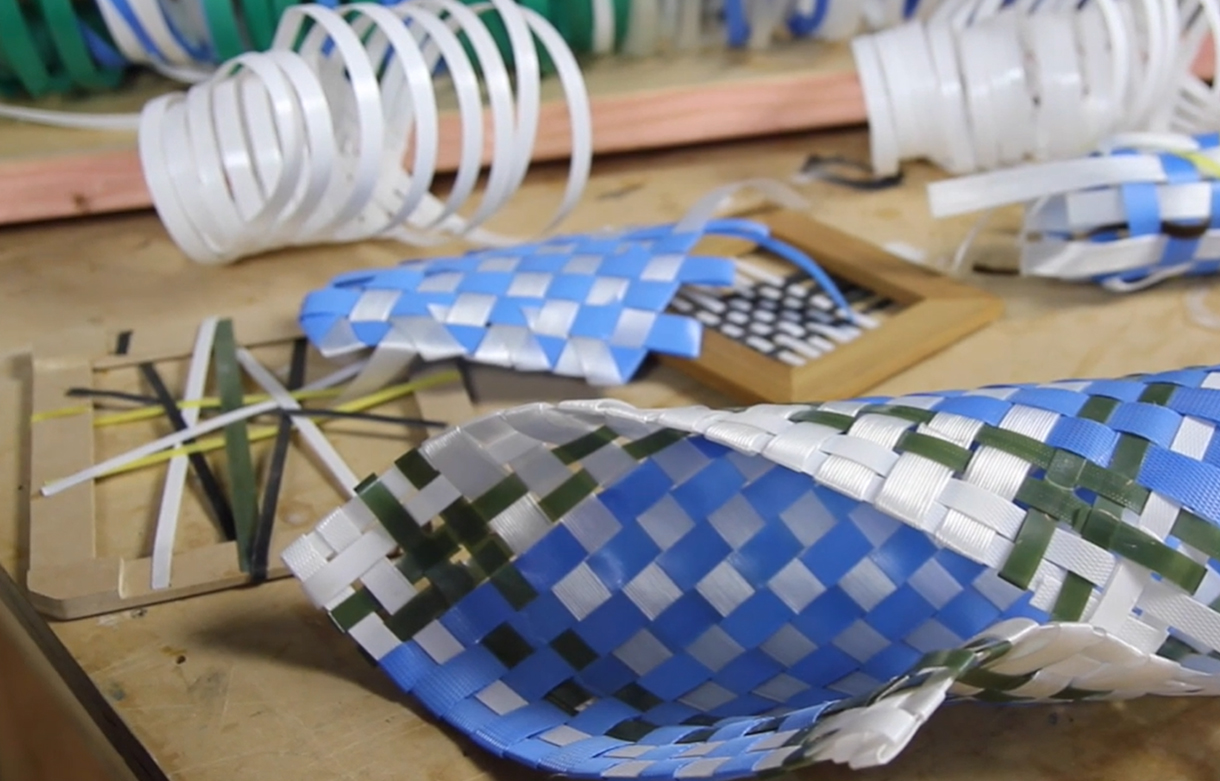Resource: Rise again

Creatively identifying and exploring alternative uses for waste materials.
Creatively identifying and exploring alternative uses for waste materials.
Initiated by the craft and design promoter Rekindle, Resource Rise Again challenged 5 teams of New Zealander creatives to identify significant waste streams and re-design their fate. Alongside Designtree's Rebecca Asquith and Tim Wigmore, I took part in exploring the potential of
upgrading
discarded office furniture and packaging-material - amongst other disregarded resources.


Case
Rekindle is a New Zealand based organization advocating for resourcefulness and for the sustainable use of resources through design, crafts and community empowerment. They gathered 5 teams of creatives, with different backgrounds, around a common threefold challenge: identifying and documenting significant local waste streams; exploring and communicating this (these) waste stream(s) through a sculptural art piece engaging the viewer in reflecting upon the use of resources; developing an upgrading strategy to turn the currently-considered waste back into desirable objects.
Approach
As part of my collaboration with Designtree, I got deeply involved in the realisation of the sculptural piece, explored the studio’s surroundings to keep mapping waste streams and sketched and modeled the early versions of the furniture range that would become the contribution to the third part of the challenge.
Our inquiry started in very explorative and empirical ways, visiting local workshops, industries and dumpsters to map the generation of waste in the surroundings. Amongst the first streams we identified was plastic packing strips, ubiquitous in the neighbourhood business’ dumpsters. Experimenting with weaving techniques - a craft deeply anchored in Māori culture -, superimposition and light-interaction, this material became a core ingredient in the development of the art piece - a cornucopia-like moebius loop symbolizing a needed circularity of resources - and of some design proposals.



The second waste stream we investigated is office furniture. While we assumed that commissioned office refurbishment would lead to the systematic dismantling and recycling of the discarded furniture, we got pretty astounded to find out that it was often not the case. We therefore dismantled, experimented, re-combined, joined… and empirically identified interesting combinations of items that guided our sketching and more advanced prototyping, in a quest to propose desirable alternatives to the landfilling of these valuable resources.








Might it be a specific material - leather and plywood offcuts from nearby shops -, the hint of a manufacturing process - edge banding on plywood edges - or a technical part - e.g. the star-shaped base of an office chair-, the collection of items that emerged from our observations proposes different directions on the way to the upcycling of discarded resources. And as they compose a new set of office furniture with strong personality and narrative, they offer an attracting way to close the loop and keep precious resources in use.







State of affairs
The documentation of the whole process, including the material exploration and the final outcomes, was completed by Rebecca and Tim and handed out to Rekindle (the five teams’ contributions can be found here). While some of the lamps produced for the project attracted attention and were ordered for the headquarters of Sustainable Coastlines in Auckland, the project led Designtree - and myself - to meet a handful of interesting and inspiring contacts; I was recently told that they are now collaborating with one of these contacts on further projects!
This project - as well as the whole collaboration with Tim and Rebecca - also taught me a lot about the chance and sometimes the burden that it is to lead one’s own small company. They turned this into a lifestyle that I still remember today; they remain inspirational figures to me, as well as good friends.